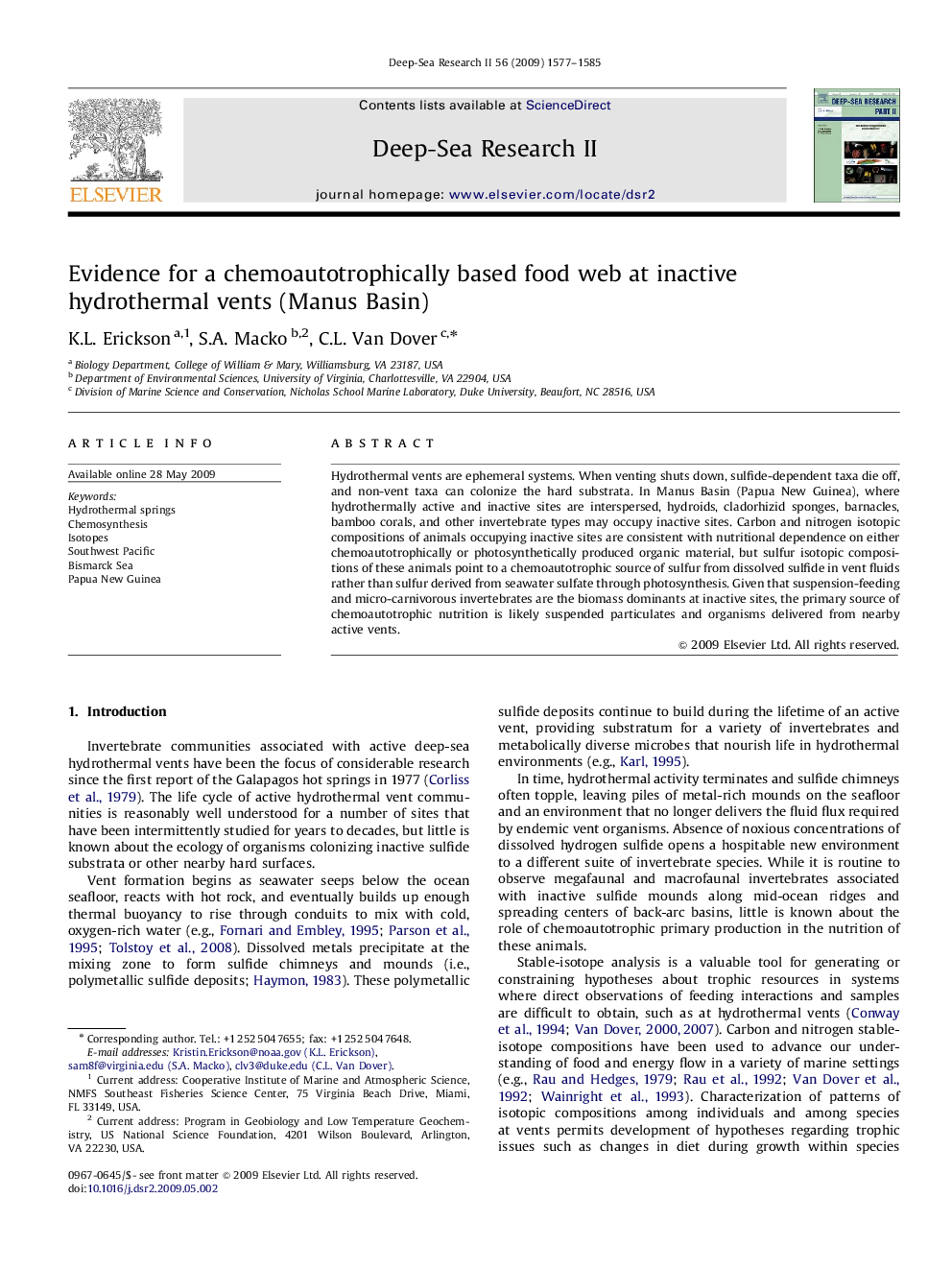| Article ID | Journal | Published Year | Pages | File Type |
|---|---|---|---|---|
| 4537281 | Deep Sea Research Part II: Topical Studies in Oceanography | 2009 | 9 Pages |
Hydrothermal vents are ephemeral systems. When venting shuts down, sulfide-dependent taxa die off, and non-vent taxa can colonize the hard substrata. In Manus Basin (Papua New Guinea), where hydrothermally active and inactive sites are interspersed, hydroids, cladorhizid sponges, barnacles, bamboo corals, and other invertebrate types may occupy inactive sites. Carbon and nitrogen isotopic compositions of animals occupying inactive sites are consistent with nutritional dependence on either chemoautotrophically or photosynthetically produced organic material, but sulfur isotopic compositions of these animals point to a chemoautotrophic source of sulfur from dissolved sulfide in vent fluids rather than sulfur derived from seawater sulfate through photosynthesis. Given that suspension-feeding and micro-carnivorous invertebrates are the biomass dominants at inactive sites, the primary source of chemoautotrophic nutrition is likely suspended particulates and organisms delivered from nearby active vents.
